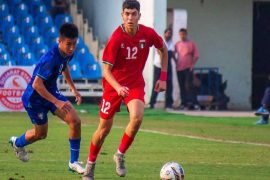The Osaka Marathon Organizing Committee will start at 10 a.m. (Japan time) on Friday, April 5, the process of accepting applications for runners in the 9th Osaka Marathon scheduled for Sunday, December 1, 2019.
The Osaka Marathon, Japan’s second biggest road race next to the Tokyo Marathon in terms of participants, is an urban marathon event with 32,000 runners from home and abroad taking part. This year’s race will be staged on a new course, which finishes at Osaka Castle Park, with runners pounding along points of interest in Osaka, including the event’s regular sections — the downtown Dotonbori canal and the Midosuji boulevard — and an additional landmark, the 300-meter-high Abeno Harukas building, roared on by 1.3 million roadside spectators along the way.
The Osaka Marathon features various programs that are expanding in scale every year along the theme of a “charity marathon.” Attention from abroad is also growing every year toward the Osaka Marathon, which drew more than 4,500 runners from overseas in its eighth run last year. For the ninth event, an information desk will be again set up to answer inquiries on overseas entries in an effort to attract many runners. The organizing committee looks forward to welcoming as many participants as possible.
In addition to the marathon, participants may enjoy the city of Osaka by indulging in its own soul food, which epitomizes the famous saying, “Osaka is the town where people go broke over food.” Participants may also go shopping, appreciate such traditional performing arts as Noh stage dramas, Kyogen comedy, Kabuki theater and Bunraku puppetry, explore Kaiyukan, one of the world’s largest aquariums, and immerse in entertainment at Universal Studios Japan. Summary guidelines for Osaka Marathon applications are available below.
Reference: Comments from participants in the 8th Osaka Marathon
According to a questionnaire survey of overseas runners, their rate of satisfaction was extremely high at about 98%. Especially, many of them gave high marks to the event’s support system, including cheering from spectators along the course and volunteer activities.
- “I came to understand the culture and life of Osaka by taking part in the Osaka Marathon.” (A man in his 20s)
- “When I was beginning to give up, I heard spectators cheer me on. That made me go for it.” (A woman in her 30s)
Disclaimer:
The information contained in this article is for educational and informational purposes only and is not intended as a health advice. We would ask you to consult a qualified professional or medical expert to gain additional knowledge before you choose to consume any product or perform any exercise.






